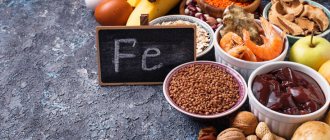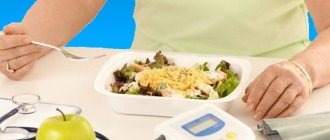Diabetics have to be careful and even cautious when choosing the products that will end up on their plate, since not only the health, but also the lives of those who struggle for a compatible blood sugar level depend on compliance with nutritional rules.
Unfortunately; Not all foods that most people call healthy are suitable for diabetics. For example, the safety of consuming certain fruits and vegetables raises questions: is pumpkin for diabetes mellitus a forbidden fruit or a beneficial gift of nature? Let's try to figure it out.
Principles of carbohydrate metabolism
To understand why such indices are needed, you should understand the physiological processes that occur in the human body, because the indicators are associated with them. A person receives the required amount of energy in the process of carbohydrate metabolism. A simplified version says the following:
- When food enters the body, complex carbohydrates are broken down into simple saccharides, the representatives of which are glucose and fructose. Absorbed through the intestinal wall, they enter the bloodstream.
- In the blood, the level of glucose (sugar) rises sharply, and the pancreas receives a signal to release insulin (a hormonally active substance), the function of which is to transport sugar into cells and tissues and, accordingly, reduce blood levels.
- Insulin passes glucose to muscles and fat cells. Without the action of this hormone, tissues cannot let sugar in.
- Part of the monosaccharide is used to form energy resources, the rest is stored in tissues as a reserve in the form of glycogen.
Glycogen is necessary for the body to maintain optimal sugar levels in the period between meals and to restore blood glucose levels when it is significantly wasted due to physical activity.
If an insufficient amount of the hormone is produced by the pancreas, we are talking about the development of type 1 diabetes mellitus (insulin-dependent). With sufficient synthesis, but loss of cell sensitivity to insulin, type 2 pathology appears (insulin-independent).
Such patients adjust their diet, taking into account both the glycemic and insulin index of foods, since only with their help can laboratory parameters be kept within acceptable limits.
Scheme of the participation of the hormone insulin in metabolism
What is the insulin index?
This figure is considered relatively young. It determines how much of the hormone insulin is released by the pancreas in response to the intake of a portion of carbohydrates in food. AI is not always proportional to another well-known indicator - the glycemic index.
It is known that not only saccharides, but also proteins and fats in large quantities can stimulate insulin synthesis. This happens even when the glycemic level does not require reduction. It is believed that it is bread that causes the greatest release of the hormone, although its glycemic index numbers are by no means the highest.
Pumpkin - contraindications
Pumpkin reduces the acidity of gastric juice due to potassium and magnesium. This may be useful in hyperacid conditions or to reduce appetite. For diseases with low acidity of gastric juice, such a property of pumpkin as a decrease in acidity will only bring harm.
In addition, due to the large amount of fiber, this product stimulates the activity of the intestines, which, when functioning normally, helps prevent constipation.
With diarrhea, it causes increased symptoms, gas formation and abdominal pain. Many patients report pain and rumbling in the stomach when eating pumpkin for the first time.
Difference between indexes
The glycemic index (GI) shows how much and how quickly sugar levels can increase in the bloodstream after receiving a portion of a particular product (possibly a dish). This indicator depends on the following points:
- activity of enzymatic reactions in the intestinal tract;
- growing conditions;
- product preparation technology;
- use of heat treatment;
- combination with other food products;
- storage conditions.
The use of heat treatment of a product affects its glycemic indicators.
Clinical studies have made it possible to calculate not only the increase in blood sugar after food intake, but also the time and amount of insulin that is necessary to return the numbers to their original state.
The level of AI is most important to take into account for insulin-dependent diabetics, since they need to correctly calculate the required dose of the drug.
During the same clinical studies, the ratio of GI and AI of the main products was determined for the purpose of comparing them. Scientists were perplexed when they found discrepancies in two numbers for the same product. For example, the GI of lactose turned out to be higher than its insulin values, which cannot be said about milk and dairy products. Their insulin index was several times higher than the glycemic index. For example, the GI of yogurt is 35, and its AI is 115.
Raw, boiled, baked in the oven
The same product may have different characteristics under different conditions. Pumpkin is no exception. But there are few ways to prepare it without heat treatment. If the glycemic index of raw pumpkin is low, then the finished product will have different properties. Factors influencing such changes:
- degree of maturity;
- method of cultivation;
- vegetable variety;
- processing method (grinding);
- method of preparing pumpkin dishes;
- storage conditions for raw and finished products.
This explains why the glycemic index of pumpkin (raw) is low. Thus, after heat treatment, food loses some of its beneficial components, nutrients are transformed, and substances are formed that help accelerate the production of glucose. In the case of pumpkin, the increase in GI is due to an increase in starch content.
Due to the gelatinization process, conditions are created for an increase in glucose content. For this reason, the GI of boiled pumpkin is 75 units. Diabetics should consume it in limited quantities. Moreover, you cannot introduce dishes based on this vegetable into your diet every day. You should take breaks.
The GI increases even more when baked. Such dishes are contraindicated in diabetes and in cases where you need to reduce body weight. The glycemic index of baked pumpkin is 75-85 units. But it is also impossible to completely exclude it from the diet.
We recommend that you read the Glycemic Index of Strawberries
We need to look for ways to prepare vegetables in such a way that the GI does not increase so much. The benefits of pumpkin for diabetes include a positive effect on the pancreas. The vegetable regulates the production of insulin, which helps maintain sugar at normal levels, because the hormone is responsible for transporting glucose.
Application of indicators in practice
Important advice for people suffering from diabetes: when creating an individual menu, you should initially rely on glycemic index indicators, and only then adjust products to each other, taking into account the body’s insulin response to their consumption.
Complete neglect of AI is unacceptable, since foods with high numbers significantly deplete the pancreas, provoking the accumulation of lipids rather than using the existing reserve.
Principles for combining products according to their insulin index:
- Protein products (meat and fish, cottage cheese, nuts and mushrooms) should not be combined with starches (cereals, potatoes, peas and bread) and fast carbohydrates. They go well with fats (creamy and vegetable) and vegetables.
- Starches cannot be combined with fast carbohydrates (honey, fruit, jam, chocolate). Goes well with fats.
- Fast carbohydrates are not compatible with proteins, starches and vegetables. Goes well with fats.
- Vegetables do not go well with fast carbohydrates. Good when combined with proteins and fats.
Fish with vegetables is the optimal combination for patients with diabetes
. According to these principles, experts give diabetics the following recommendations:
- a ban on the consumption of easily digestible saccharides with fats, for example, meat dishes should not be washed down with sweetened drinks;
- the combination of proteins and carbohydrates should be limited to the maximum, for example, honey should not be added to cottage cheese;
- complex carbohydrates and unsaturated fats are the preferred combination (nuts and fish);
- During the cooking process, heat treatment should be used minimally (if possible);
- The breakfast menu should include protein products;
- in the evening, they prefer complex carbohydrates, since they promote the secretion of pancreatic hormone for a long time, but in small quantities.
There is no need to give preference to “dietary” products (meaning the labels on the packages), since precisely in order to achieve a “dietary” state, fats in the composition are replaced with carbohydrates.
What you need to know about the insulin index?
It is impossible to independently determine the AI numbers of a particular product (special clinical and laboratory studies are carried out for this purpose). There are ready-made tables of insulin indexes.
Unfortunately, a complete table of indicators of the main products is not freely available, and those lists that can be found on the Internet contain a small number of “unfriendly” representatives, by the name of which you can already imagine which category they belong to.
Key points to remember:
- dairy products belong to the group with high AI numbers;
- the index of meat and fish dishes varies between 45-60 units;
- raw chicken eggs are classified as products with a low index – 31;
- low numbers are typical for vegetables (except potatoes), mushrooms;
- other product groups have similar indicators of the two indices;
- AI numbers for fruits and dark chocolate are 20-22.
Comparison of GI and AI indicators of some food products
About the discrepancy between GI and AI of dairy products
Many diabetic patients and those people who are interested in losing excess weight are interested in the question of why the indicators of the two indices are so different for milk-based products. For example, the glycemic indicators of cottage cheese are at the level of 30 units, yogurt - 35, and the body's insulin response is 120 and 115, respectively.
Dairy products do not cause a significant increase in glycemic levels, but they stimulate the synthesis of insulin by the pancreas. The release of a significant amount of the hormone inactivates the work of a special enzyme that is involved in the process of lipid breakdown.
The result is the accumulation of fats in the body, no matter how strange it may sound (especially for those who thought that by eating cottage cheese, including “diet” cottage cheese, you could quickly lose weight). In addition, dairy products in large quantities can cause swelling, retaining fluid in the body. This occurs due to stimulation of the synthesis of adrenal hormones (particularly aldosterone) by insulin.
Important! There is no need to think that dairy products should not be consumed; on the contrary, this should be done due to the huge amount of useful substances in the composition, but in moderation.
Dairy products are vital products that require careful consumption
Why do you need to monitor your GI when losing weight?
The essence of a diet based on GI calculations is that when preparing a diet, fast carbohydrates are replaced by complex ones. Of course, low-calorie foods are selected for the menu. The body ends up receiving less energy than it expends during the day, and the excess weight begins to disappear. This technique, according to many, has its own advantages. For example, during a diet taking into account the GI, there is practically no feeling of hunger, since complex carbohydrates take longer to process. A few days after such a diet, metabolic processes usually accelerate and the functioning of the gastrointestinal tract improves. And adjusting the diet according to GI is suitable even for pregnant and lactating women (of course, only after consultation with a specialist).
Is an insulin surge scary?
An increase in the levels of hormonally active substances of the pancreas is an absolutely normal physiological reaction of the body. The numbers increase in the blood after receiving any food. It is impossible to completely eliminate hyperinsulinemia, since in this case disturbances in the body will occur.
Such hormonal surges occur up to 3-4 times a day, but abuse of easily digestible carbohydrates provokes a more frequent occurrence of such increases in numbers, and this is already bad for the normal course of metabolic processes.
How to use the index to gain and lose weight
If a person has a goal to reduce their body weight, then it is better to include products that have high AI indicators in an individual menu so that they are consumed in the first half of the day. After 14-00 it is already important to keep hormone levels within strict limits.
If the goal, on the contrary, is weight gain, foods with significant AI indicators should be distributed as follows: 2 meals should be before lunch, the third after lunch.
An endocrinologist or nutritionist will help a diabetic understand what AI is, why it is needed, and how to use tabular indicators of products to create a menu. With the help of individual recommendations, the patient will be able to adjust the future diet independently.
Rules for eating carrots for diabetics
In order for the nutrients contained in carrots to bring maximum benefit, you need to know the rules for their use:
- Try to use young carrots, they contain more vitamins than last year's root vegetables.
- For frying, it is better to cut the vegetable into large pieces. Finely grated carrots lose more useful elements during heat treatment.
- If you need to cook a vegetable, do not peel it. Remove the finished carrots from the pan and rinse with cold water. And only then remove the peel. This way you will save as much useful information as possible.
- When cooking carrots, try to use a minimal amount of vegetable oil.
- Vegetables baked in the oven are allowed for everyday consumption, but no more than 2 pieces.
- It is better to combine fried or stewed carrots with other products.
- Fry or stew the root vegetable for no more than 15 minutes. But you should cook it for no more than 1 hour.
- It is better not to store the vegetable in the basement, but to put it in the freezer. Moreover, you can freeze both fresh and boiled carrots.






